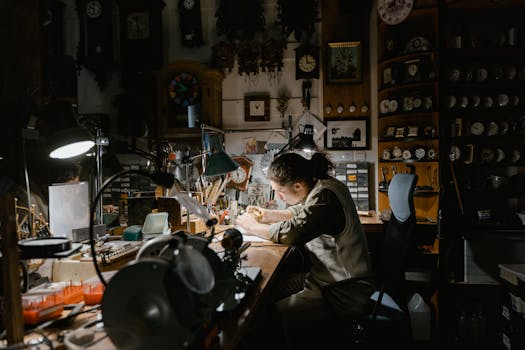The Evolution of Watchmaking: Techniques and Innovations Through the Ages
Takeaways: This article delves into the fascinating history of watchmaking, highlighting key techniques and innovations that have shaped the industry. From ancient sundials to smartwatches, we explore how technology, craftsmanship, and design have evolved over centuries to create the timepieces we cherish today.
Watchmaking is not just a craft; it is an art form that has evolved significantly over time. The history of watchmaking is a tale of human ingenuity, precision, and a relentless pursuit of perfection. This article will take you on a journey through the ages, showcasing how watchmaking techniques and innovations have transformed the way we tell time.
Ancient Timekeeping Methods

As civilizations advanced, so did their methods of timekeeping. The Greeks and Romans developed more sophisticated sundials, while water clocks, or clepsydra, emerged in China and Egypt. These devices used the flow of water to measure time intervals, showcasing early engineering skills.
However, the need for more accurate and portable timekeeping devices became apparent, especially for navigation and trade. This led to the development of mechanical clocks in the 13th century, an innovation that laid the foundation for modern watchmaking.
The Birth of Mechanical Watches
The 14th century marked a significant turning point in the history of watchmaking with the introduction of the mechanical watch. The first portable timepieces were created in Europe, often referred to as “pocket watches.” These early watches were large and bulky but represented a significant advancement from previous timekeeping methods.
Key innovations during this period included the escapement mechanism, which allowed for more accurate timekeeping by controlling the release of energy from the mainspring. The invention of the balance wheel in the 17th century further enhanced precision, enabling watches to keep more accurate time.
During the Renaissance, watchmaking became a respected profession. Cities like Geneva, London, and later, Switzerland, became centers of horological excellence. Craftsmen began to experiment with intricate designs and complications, leading to the creation of watches with features like calendars, moon phases, and even minute repeaters.
The Industrial Revolution and Mass Production

In the United States, companies like Waltham and Elgin pioneered the assembly line method of watch production, significantly reducing costs and improving efficiency. The introduction of standardized parts meant that watches could be produced more quickly and with greater consistency.
As a result, watches became a popular accessory for both men and women. The pocket watch remained a staple until the late 19th century when wristwatches began to gain popularity, especially among soldiers during World War I. This shift marked the beginning of the wristwatch era.
Technological Innovations in the 20th Century

This era also witnessed the rise of digital watches, which displayed time in numerical format. Companies like Seiko and Casio led the charge, producing watches with additional features like calculators, alarms, and even fitness tracking capabilities.
Despite the quartz revolution, traditional mechanical watches remained popular, particularly among enthusiasts and collectors. Luxury brands continued to innovate, incorporating advanced materials such as ceramics and carbon fiber, and developing complex movements that showcased incredible craftsmanship.
The Smartwatch Revolution

Brands like Apple, Samsung, and Garmin have transformed how we view watches, turning them into multifunctional devices that cater to a tech-savvy audience. This innovation has opened new avenues for watchmaking, blending traditional craftsmanship with cutting-edge technology.
As we look to the future, the watchmaking industry continues to evolve, driven by advancements in technology and changing consumer preferences, ensuring that the art of horology remains vibrant and relevant.






